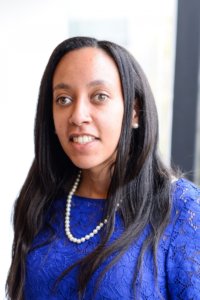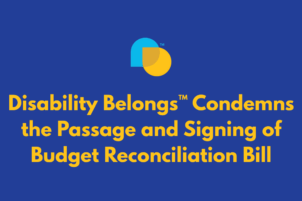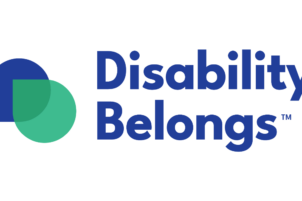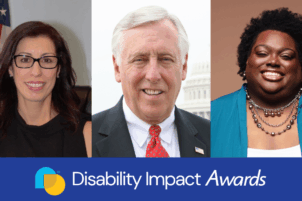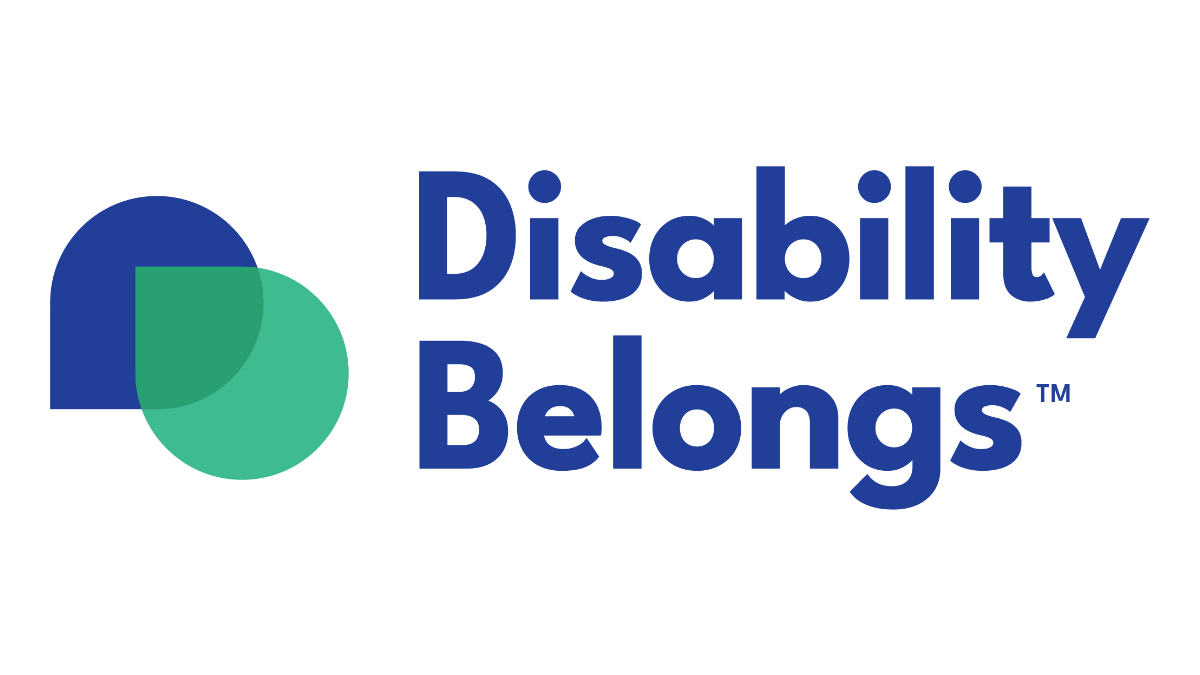Honoring Women with Disabilities During Women’s History Month
Haben Girma has been advocating for herself since she attended elementary school in Oakland, California. She became the first Deafblind person to graduate from law school when she earned her degree from Harvard Law School in 2013. She is a civil rights attorney who advocates for disability rights, a public speaker who travels the country changing people’s perceptions of the disability community in the media and has been featured in Forbes “30 Under 30” and on NBC and NPR.
In 1983, five years before Girma was born, her mother Saba Gebreyesus fled Eritrea, a city in Africa with approximately six million people, taking two weeks to walk to Sudan and sleeping in trees “surrounded by hungry hyenas.” But she was determined to give Girma the opportunities her son wasn’t given; he also was born deafblind.
After her mom settled in California, Girma was born in 1988. In elementary school, she learned Braille and later used a Bluetooth keyboard hooked up to a Braille reader to communicate with others. At school, she gained access to the materials she needed to be able to learn. She credits her supportive teachers and classmates, accessible materials such as interpreters and other accommodations, and developed study skills and homework strategies for her success.
Girma stated that removing barriers for herself helped in her journey to becoming a disability advocate.
Girma made the decision to become an advocate for disability rights when she was attending Lewis & Clark College in Portland, Ore. where she was forced to eat whatever food was on her plate. It made her realize she should have choices like everyone else.
By advocating for herself, she was helping other students get the access they needed.
“I didn’t have these big lofty goals in the beginning,” she said in an interview with RespectAbility. “I was just trying to fix a problem that I had.”
Just 34.6 Percent of Working-Age Women with Disabilities Are Employed
More than 20.9 million women live with a disability in the U.S., including more than 10.2 million of which are working-age (18-64).
Fully one-in-five Americans have a disability and studies show that most of them want to work. Yet 70 percent of working-age Americans with disabilities are outside of the workforce. Only 34.6 percent of working-age women with disabilities (3.5 million) are employed in the U.S. compared to 82.5 percent of working-age women without disabilities. This is in line with the rest of the country, with fully one-in-four American adults having a disability just 37 percent of those who are working-age being employed, despite polls showing that most of them want to work. This leads to approximately 22.6 percent of women with disabilities living in poverty compared to 14.7 percent of women without disabilities.
Women of Color with Disabilities Face Additional Barriers
The 2018 Annual Disability Statistics Compendium Supplement does not have female employment disaggregated by race. However, with more than 7,500 African Americans with disabilities leaving the workforce last year, it is likely that women of color with disabilities have additional barriers.
There are more than 5.6 million African Americans living with a disability in the U.S. Out of more than three million working-age African Americans with disabilities, barely 934,589 have jobs. According to the Compendium, just 28.6 percent of African American civilians with disabilities ages 18-64 living in the community had a job, compared to 73.7 percent of blacks without disabilities.
Today there are 1.1 million black students (K-12) with diagnosed disabilities in America; however, the deck is stacked against them. Due to redlining and other factors, many of them go to highly under-resourced schools that do not have enough special educators. Moreover, while it is easy to see and understand when someone is deaf and/or blind, frequently “invisible disabilities” such as ADHD and dyslexia are not diagnosed and students do not get the supports they need to achieve.
Frustrated, students with undiagnosed or addressed disabilities can act out and become suspended. Studies show that when students miss too many days, they get so far behind in class that it can lead to them dropping out of school and entering the school-to-prison pipeline. Today there are more than 750,000 people with disabilities behind bars in America. Indeed, half of all women who are incarcerated in America have a disability. The majority of them do not have high school diplomas, are functionally illiterate and are people of color. There are more approximately 150,000 people who are deaf incarcerated today, and approximately the same number are blind.
Overall, only 66 percent of students with disabilities graduate high school compared to 84 percent of students without disabilities. However, only 62 percent of black students with disabilities graduate high school compared to 76 percent of black students without disabilities.
A Focus on Hollywood Inclusion
Girma’s disability advocacy is not restricted to education; she also uses the media to decrease the stigma in the community. She believes the media can educate society about disability issues, and society should help in removing that burden. She wants to promote positivity through the creation of TV shows and movies that depict disability roles authentically and writing disability stories.
To accomplish that, she said the production team needs to attract more actors with disabilities to take on roles that depict characters with disabilities to portray them positively. She said one way producers can make this happen is to choose to write in more roles and adapt roles for actors with disabilities if a role is not intended for a character with disabilities.
Girma also helps the media understand the community by speaking. When she gives speeches, her topics include disability rights and inclusion and accessibility.
Girma met with RespectAbility staff at the Media Access Awards in Los Angeles, learning about collaborative efforts to encourage Hollywood executives to increase disability inclusion in the media.
Girma outlined her goals in an interview with RespectAbility:
“Create stories through the media. Build relationships with production studios. Teach them to think of disability as great story material, as another part of the human experience. See your role as a position of power because you can each write stories about how people think about disabilities. Use your talent to send positive disability messages.”
Role models such as Girma make a big difference in setting high expectations for youth with disabilities. People with disabilities of all backgrounds can be amongst the highest achievers on earth. Harriet Tubman had epilepsy, performer Selena Gomez lives with lupus, business leader and Shark Tank superstar Barbara Corcoran is dyslexic and gymnast Simone Biles has ADHD. Each of them, like Girma, is a positive role model for success.
All throughout Women’s History Month, we will post pieces about female role models with disabilities. These women are featured examples of RespectAbility’s #RespectTheAbility campaign, which highlights successful individuals with disabilities, as well as companies that employ people with disabilities. Read more today:
- Simone Biles: Olympic & Disability Champion Makes History While Mesmerizing Many
- Shark Tank Entrepreneur Barbara Corcoran Proves Dyslexics Can Be Successful
- Lois Curtis: Woman with Disabilities Fights for Freedom For All
- Selena Gomez Serves as Role Model for Young Women with Disabilities
- Salma Hayek, Role Model for Latina Woman with Disabilities
- Frida Kahlo, Role Model for Artists, People with Disabilities and Bisexual Women
- Cristina Sanz: First Hispanic with a Disability As Part of Ensemble Cast to Be on an Emmy Award-Winning Show
- Harriet Tubman, Legendary Poet and Civil Rights Activist with Epilepsy, Inspires Generations
- Maya Angelou, Legendary Poet and Civil Rights Activist Who Had Disability, Inspires Generations
- Selma Blair: Positive Role Model for Success
- Lori Golden, Self-Advocate and Trailblazer in Disability Inclusion in the Workplace
- Successful Pioneer of Change Janet LaBreck Serves as Role Model for African American Women with Disabilities
Research assistance from RespectAbility Fellow Ryan Knight.


